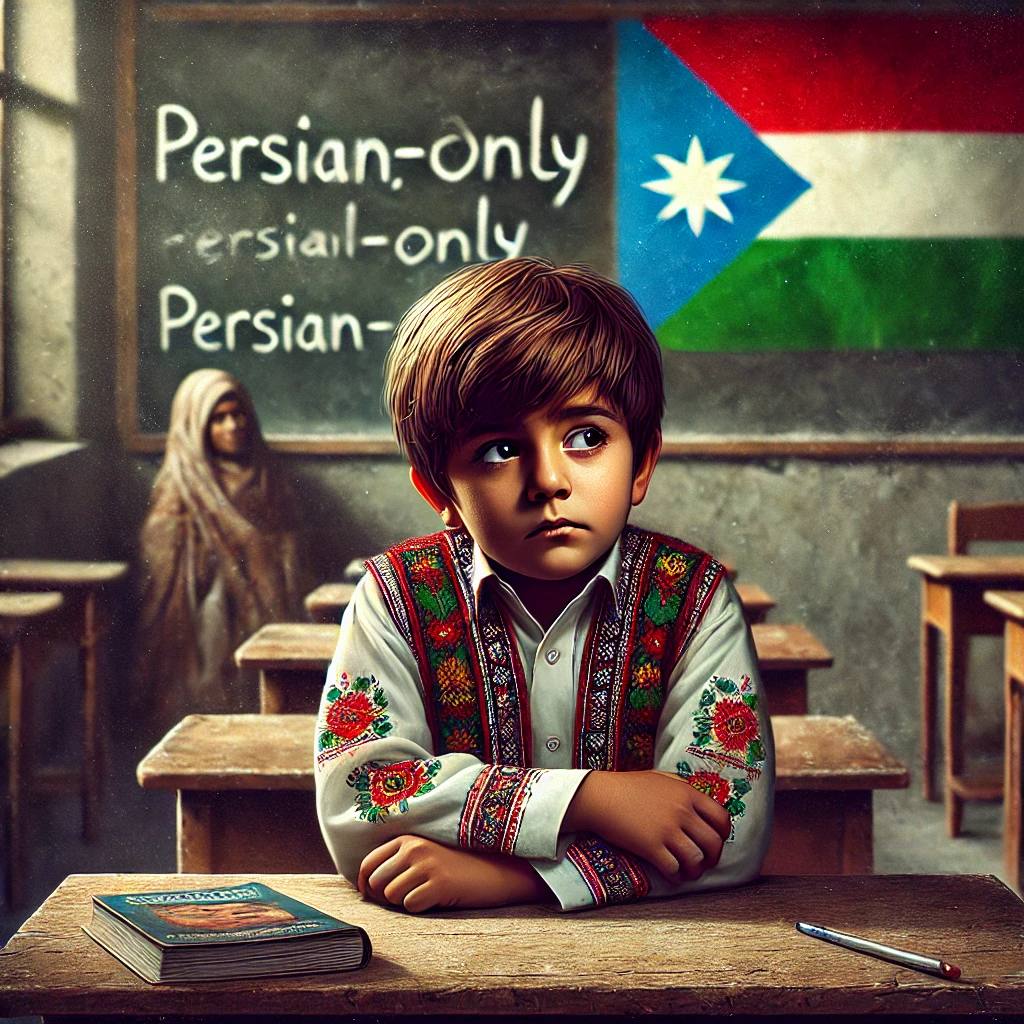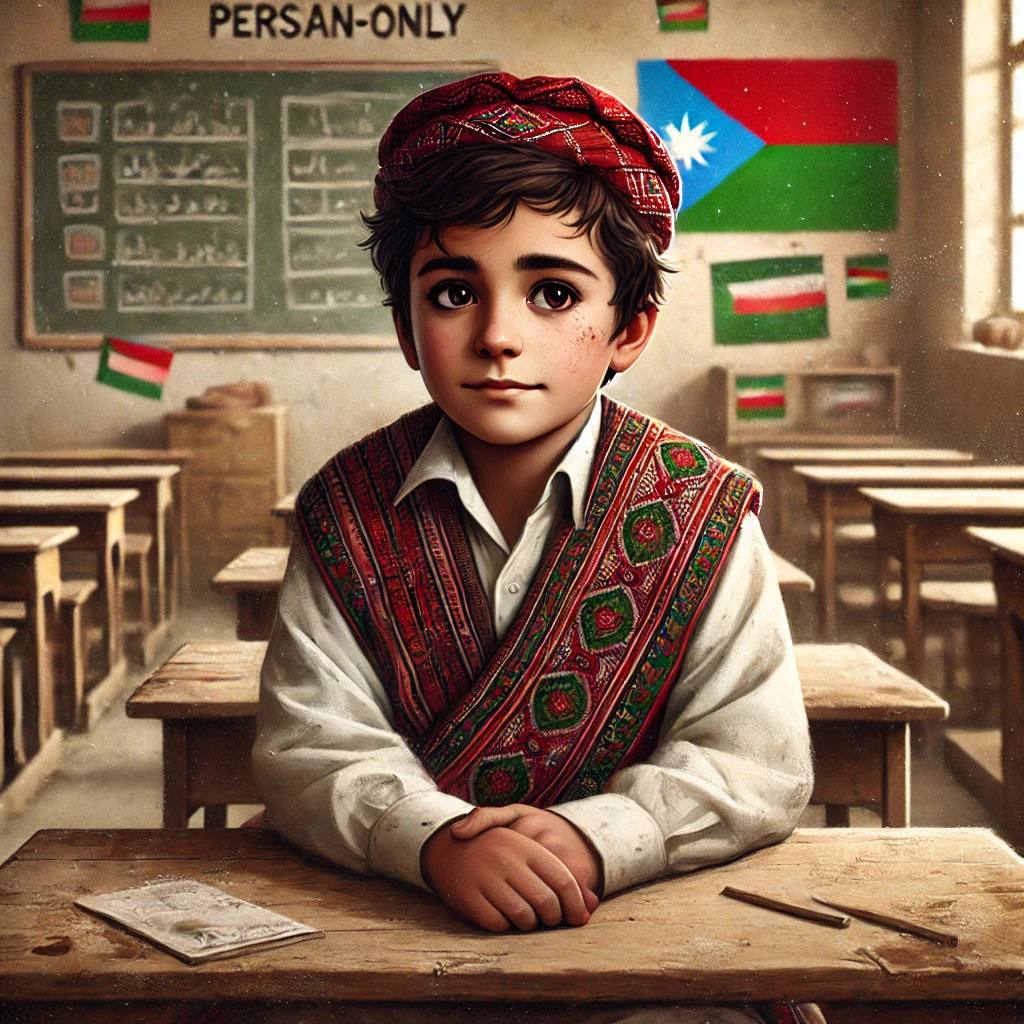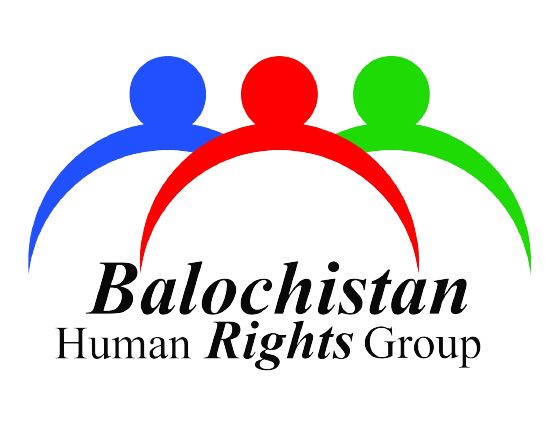Systematic Suppression of Language and Cultural Identity in Balochistan
Introduction
When seven-year-old Yousef walked into his first-grade classroom, he was excited to begin learning. But his smile faded quickly when the teacher said, “Here, you only speak Persian. If you speak Balochi, you’ll be punished.”
This is not just Yousef’s story. For many Baloch children in southeastern Iran, their first experience of formal education begins not with empowerment, but with the denial of their mother tongue and cultural identity.
This report explores the slow but deliberate erasure of the Balochi language in Iran’s Balochistan province, and the deep cultural, psychological, and social consequences that follow.

The Mother Tongue: A Silent Victim of Centralized Policy
Despite Article 15 of the Iranian Constitution allowing for the teaching of local languages alongside Persian, no formal curriculum or educational policy exists to support the Balochi language in public schools.
This is not a mere bureaucratic oversight. It is part of a broader, long-term strategy of cultural assimilation that seeks to eliminate ethnic and linguistic diversity, especially in peripheral regions like Balochistan.
———————————————————————————————-
Human Consequences: Identity Denied from Childhood
When Baloch children enter school, they are forced to abandon the language they first thought in—the one they used to speak with their mothers and express their emotions.
Educational experts and psychologists warn that neglecting a child’s mother tongue during critical developmental years can lead to identity crises, diminished self-esteem, and broken connections with family and community.
Roya, a mother of two in Zahedan, says:
“My kids only learn Persian through TV and school. But when they try to speak it, they can’t really express themselves. It feels like there’s a wall between us.”
————————————————————————————————-
Teachers and Cultural Workers Under Pressure
In the absence of official support, Baloch teachers and cultural activists are left to act on their own. Some offer informal classes or create educational content online, despite lacking resources.
These efforts often face pressure from authorities, warnings of illegality, and a total lack of institutional support.
Abdollah, a retired teacher from Chabahar, recounts:
“We have no books, no help. Even when we tried to organize voluntary Balochi classes outside school hours, we were told it was against the law.”
————————————————————————————————
Cultural Resistance: Keeping the Flame Alive
Despite obstacles, the Baloch community continues to resist cultural erasure. Independent cultural groups, families, poets, and a new generation of digital content creators are working to preserve the Balochi language.
Podcasts, YouTube channels, home-based learning programs, and online campaigns form part of a growing grassroots movement.
Still, without formal recognition of the language in education systems and media, these efforts remain fragile and face the constant threat of marginalization.
—————————————————————————————————
Conclusion
Language is more than just a tool for communication. It is a vessel of culture, a memory of the past, and the backbone of a community’s identity.
The suppression of the Balochi language in Iran is not just about denying people the right to speak—it’s about erasing them from the national narrative.
It is time for government bodies, human rights organizations, and the global public to recognize the right to education and expression in one’s mother tongue.
As long as a child cannot speak their native language at school, educational justice remains a distant dream.


